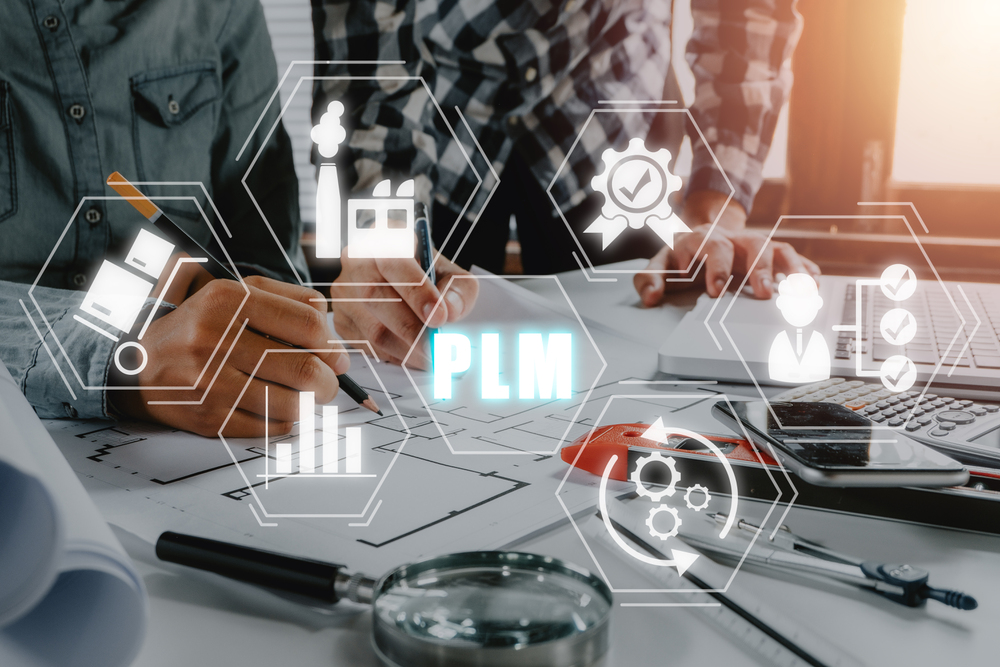In today’s optical manufacturing landscape, the fusion of precision technology and innovation is no longer optional—it’s fundamental. From CNC-powered lens machining to AI-driven diagnostics, the tools shaping how we see are becoming just as advanced as the visions they help correct. This convergence is redefining everything from how eyewear is designed to how quickly personalized lenses can be delivered.
At the heart of this transformation lies a network of highly specialized optical suppliers. These players are not just intermediaries—they’re enablers of progress. By delivering advanced equipment, raw materials, software platforms, and technical know-how, suppliers are the catalysts propelling optical manufacturing into a smarter, faster, and more sustainable future.
Optical and ophthalmic suppliers and manufacturers are companies and entities that provide the materials, components, machinery, and technologies required to manufacture ophthalmic lenses, optical coatings, frames, and other vision-related products. Their influence spans across every step of the production chain—from raw material sourcing and digital surfacing to smart coatings and final inspection—making them pivotal to the industry’s evolution.
What Is Driving Innovation in Eye Care Manufacturing?

The eye care industry is no stranger to disruption. In recent years, it has witnessed a surge of innovations driven by advances in adjacent sectors like robotics, materials science, and artificial intelligence. Today’s consumers want more than just vision correction—they demand style, comfort, personalization, and sustainability.
This shift has placed immense pressure on manufacturers to adapt. Optical suppliers have answered that call by developing advanced tools and materials that empower optical labs and brands to evolve faster than ever.
Here are the key forces accelerating innovation in eye care manufacturing:
-
Advances in AI and automation
Machine learning, predictive analytics, and robotic systems are streamlining lens production and inspection.
-
Demand for personalized and wearable vision solutions
Consumers expect ergonomic, stylish, and custom-fit eyewear tailored to individual prescriptions and preferences.
-
Sustainable and bio-based materials
Manufacturers are pivoting toward renewable resources and circular production models to reduce environmental impact.
-
Rising global demand for high-quality eye care
Aging populations, digital eye strain, and vision awareness campaigns are fueling global growth in optical product consumption.
How Are Optical Suppliers Transforming Lens Manufacturing?
Lens manufacturing has evolved from a labor-intensive process into a highly automated, digitally controlled workflow. Optical suppliers have led this shift by delivering next-gen equipment and materials that improve accuracy, increase throughput, and enable mass customization.
Whether it’s ultra-thin high-index lenses or photochromic coatings that adapt to light conditions, the supplier’s role is instrumental in driving both performance and personalization.
Major innovations introduced by suppliers include:
- Freeform surfacing technology
- Nano-coatings with specialized optical properties
- Adaptive lenses that respond to environmental conditions
- High-speed, high-precision CNC generators
- Real-time diagnostic and QA tools integrated into lab workflows
These technologies allow optical manufacturers to deliver a better product, faster and more consistently than ever before.
What Is Freeform Lens Technology and Why Does It Matter?
Freeform lens manufacturing represents a major leap forward in ophthalmic precision. Using CNC (Computer Numerical Control) machines, lenses are digitally surfaced on both sides, allowing custom prescription curves to be crafted with micron-level accuracy.
This method offers several advantages over traditional semi-finished lenses:
-
Pros:
- Fully customized lens geometry for each wearer
- Better peripheral clarity and reduced distortion
- More compact and lightweight lenses
- Reduced inventory due to on-demand surfacing
-
Cons:
- Higher equipment and setup cost
- Greater sensitivity to calibration errors
- Requires advanced software integration
The result is a lens that not only matches the wearer’s prescription but also compensates for frame shape, fitting height, and lifestyle use case.
What Are the Benefits of Smart Coatings and Surface Treatments?
Smart coatings go far beyond anti-reflective layers. Modern surface treatments enhance visual comfort, extend product lifespan, and even improve user safety.
Common types of coatings include:
-
Anti-scratch coating
Enhances lens durability and resistance to abrasions
-
Blue light filtering
Reduces digital eye strain and protects against LED and screen exposure
-
UV protection
Blocks harmful ultraviolet rays to safeguard ocular health
-
Hydrophobic/oleophobic layers
Make lenses water- and smudge-resistant for easier cleaning
-
Anti-fog treatments
Prevent condensation in humid or temperature-shifting environments
Each of these coatings is applied using specialized vacuum deposition systems or spin-coating units, often in cleanroom conditions to ensure consistent performance.
What Types of Equipment Are Used in Modern Optical Labs?

Today’s optical labs are powered by an integrated mix of mechanical systems, robotics, and smart software. Suppliers have evolved their equipment offerings to meet the demands of mass customization, high precision, and 24/7 production cycles.
Here are some of the core machines used and their primary functions:
-
Lens Blockers
Precisely align lenses for cutting and edging
-
Generators
Use CNC or diamond-turning technology to create lens surfaces
-
Polishers
Smooth and finish lenses to achieve optical clarity
-
Coaters
Apply multi-layer treatments such as anti-reflective, UV, and mirror coatings
-
Edgers
Shape lenses to fit specific frame designs
-
Inspection Devices
Conduct automated quality checks for thickness, centration, and coating uniformity
These machines are often connected through centralized control software that manages job flow, maintenance schedules, and production analytics.
How Does Automation Improve Optical Lab Efficiency?
Automation doesn’t just save labor—it creates entirely new possibilities. Conveyor belts equipped with RFID tracking now move jobs from one machine to another with zero manual input. Robotic arms pick, place, and package lenses, eliminating human error and downtime.
Software-driven workflows allow for:
- Real-time production monitoring
- Automated job queue optimization
- Predictive maintenance alerts
- Seamless integration with prescription data from EHR systems
The result is a leaner, smarter, and more scalable lab capable of handling increasing customization demands without compromising speed or quality.
What Materials Are Driving the Next Generation of Eyewear?
Material science is one of the fastest-moving fronts in optical manufacturing. New compounds and formulations are enabling lighter, stronger, and more sustainable products—while also expanding design possibilities for both lenses and frames.
Here’s a look at some of the materials leading the charge:
-
Polycarbonate
Lightweight, impact-resistant, and ideal for safety or children’s eyewear
-
Trivex
Offers better optical clarity than polycarbonate with similar durability
-
High-index Plastics
Allow for ultra-thin lenses, ideal for strong prescriptions
-
Bio-acetate
A sustainable alternative to petroleum-based plastics, made from plant cellulose
-
Titanium
Extremely strong and corrosion-resistant metal used in premium frames
-
3D Printable Resins
Specialized polymers developed for high-precision prototyping and low-volume production
Each material comes with trade-offs in terms of cost, workability, environmental impact, and aesthetics. Optical suppliers help manufacturers balance these factors based on target market, regulatory requirements, and design intent.
How Do Optical Suppliers Ensure Precision and Quality Control?
Precision is the backbone of optical manufacturing. A lens off by even a fraction of a millimeter can cause visual discomfort. That’s why suppliers invest heavily in quality control systems, cleanroom environments, and optical metrology tools.
Suppliers enable manufacturers to maintain industry standards by providing:
- Testing protocols and calibration routines
- Controlled environments for coating and assembly
- Advanced inspection tools integrated with data logging systems
What Are the Standard Tolerances in Lens and Frame Manufacturing?
Meeting international standards requires hitting tight tolerances. Some key benchmarks include:
- Lens centration tolerance – ±0.1 mm
- Base curve variation – ±0.06 D (diopters)
- Frame dimensional tolerance – ±0.5 mm
These specifications ensure that lenses align correctly with the eye and that frames fit comfortably and securely.
What Optical Metrology Tools Are Used in QA Processes?
High-precision measurement tools help manufacturers stay within tolerance and ensure product consistency:
- Wavefront sensors – Analyze light distortion for ultra-precise lens mapping
- Interferometers – Measure surface irregularities using light interference patterns
- Digital comparators – Compare finished parts against CAD models with sub-micron accuracy
These instruments are often automated and networked, allowing for real-time feedback and continuous improvement in production lines.
What Are the Most Important Factors to Consider When Choosing an Optical Supplier?

Selecting the right supplier can make or break a manufacturing operation. Beyond price, several critical factors influence long-term success and alignment with strategic goals:
-
Product Range and Specialization
Does the supplier offer the specific materials or machines you need?
-
Compliance and Certification
ISO 13485, CE marking, FDA approval—regulatory alignment matters.
-
Technical Support and Training
Are installation, troubleshooting, and usage resources available?
-
Innovation Capabilities
How frequently does the supplier update its tech or release new features?
-
Sustainability Credentials
Does the supplier follow eco-friendly practices or hold green certifications?
Suppliers that combine technical strength with proactive service and future-facing strategies tend to become valuable long-term partners.
What Are the Common Mistakes Optical Manufacturers Make When Sourcing Suppliers?
Even experienced optical manufacturers can stumble when sourcing new vendors. Here are some of the most frequent pitfalls:
-
Prioritizing Price over Quality
Short-term savings often lead to higher long-term costs in rework and downtime
-
Ignoring Compatibility with Existing Equipment
Not all machines and materials play well together
-
Underestimating Lead Time and Service Needs
Delays in installation, training, or part replacement can derail production
Thorough vetting, trial runs, and technical assessments can help avoid these traps and foster stronger supplier relationships.
What Does the Future Hold for Optical Suppliers in Eye Care Manufacturing?
The next decade promises a wave of transformation that will reshape how optical products are made, delivered, and worn. Suppliers will be at the center of this shift, embedding intelligence, flexibility, and sustainability into every step of the process.
Expect AI-powered smart factories, custom lenses designed in real time, and glasses that double as health monitors. As demand for vision care rises and technologies converge, suppliers will need to move beyond component delivery to become innovation partners.
What Will the Smart Factory of Optical Manufacturing Look Like?
Tomorrow’s optical labs will be autonomous, connected, and self-optimizing. Key features will include:
-
IoT-enabled Machinery
Devices communicating status, diagnostics, and usage data in real time
-
Automated Defect Detection
Cameras and sensors identifying flaws before they affect downstream steps
-
Remote Diagnostics
Engineers able to troubleshoot or recalibrate machines from anywhere in the world
-
Closed-loop Feedback Systems
Real-time data adjusting equipment behavior for improved consistency
This level of intelligence will reduce waste, increase throughput, and enable smaller labs to achieve big-lab performance.
How Will Customization Become the Norm in Eye Care Products?
Consumer expectations are shifting fast. One-size-fits-all is being replaced by tailored solutions across all demographics.
Mass customization will become standard thanks to:
- Advanced lens design software
- 3D facial scanning and digital fitting tools
- Hybrid manufacturing setups- combining CNC and additive methods
- Modular frame systems -that allow real-time personalization
Suppliers that support this flexibility—both technically and logistically—will lead the next chapter of growth in optical manufacturing.
Conclusion
Optical suppliers are no longer behind-the-scenes players—they are driving the future of eye care. From CNC machinery and AI software to sustainable frame materials and smart coatings, these companies are enabling new levels of speed, precision, and personalization.
As the industry evolves toward mass customization, teleoptometry, and green manufacturing, choosing the right suppliers will be as strategic as any design or business decision. For optical manufacturers looking to stay competitive, partnering with innovative, responsible, and tech-forward suppliers isn’t just smart—it’s essential.
If you’re ready to explore the cutting edge of eye care manufacturing, now is the time to connect with suppliers who see as far ahead as your vision deserves.
Find a Home-Based Business to Start-Up >>> Hundreds of Business Listings.

















































